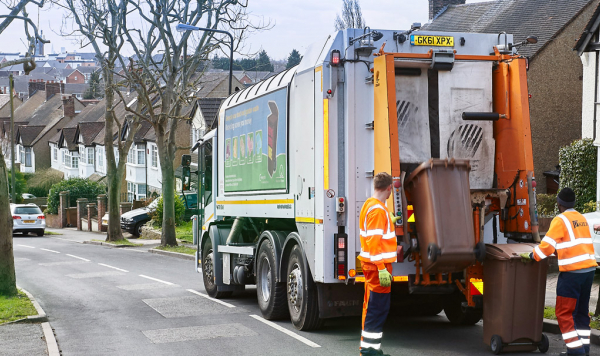Request
I would like to see all the documentation (including, but not limited to, technical studies, models, consultancy reviews, minutes of meetings etc) related to assessments undertaken by the NLWA since the DCO was granted in 2017 with regards to residual waste forecasts.
I am particularly interested to see:
- The latest model (and its date) of residual waste arising during the lifetime of the new incinerator (2025-2075)
- The assumptions that feed into this latest model (including for examples changes in waste and climate policy and regulation, technological developments, the impacts of Brexit and Covid etc)
- The sensitivity analysis that was conducted on this model
- Comparisons between the model that fed into the DCO submission and the latest model.
Many thanks
Response
REF: Request for residual waste forecasts since 2017
Thank you for your request of 1 April 2021 regarding the above. This request is being handled under the Environmental Information Regulations (EiR) 2004 and has been allocated the reference number 2021-108.[1]
You asked if we could supply the following information, which we have numbered for ease of referencing and reply:
- 1. All the documentation (including, but not limited to, technical studies, models, consultancy reviews, minutes of meetings etc) related to assessments undertaken by the NLWA since the DCO was granted in 2017 with regards to residual waste forecasts.
In addition, you advised that you are particularly interested to see:
- 1a) The latest model (and its date) of residual waste arising during the lifetime of the new incinerator (2025-2075)
- 1b) The assumptions that feed into this latest model (including for examples changes in waste and climate policy and regulation, technological developments, the impacts of Brexit and Covid etc)
- 1c) The sensitivity analysis that was conducted on this model
- 1d) Comparisons between the model that fed into the DCO submission and the latest model.
Waste forecasts
As you are aware we have a statutory responsibility to dispose of the waste collected by seven north London boroughs. We currently use both landfill (in decreasing amounts) and energy-from-waste for disposing of the residual waste. However, our existing energy-from-waste facility needs replacing and we are investing in a replacement facility that has to be future-proofed with the capacity to accept waste volumes now and in the future. The replacement ERF has therefore been designed to accommodate a range of residual waste tonnages in north London. The Need Assessment for the new facility indicates that tonnages are likely to lie within the following ranges, when factoring in different to baseline household recycling rates:
- In 2020/21 between 567,000 tonnes and 661,000 tonnes
- In 2036/37 between 491,000 tonnes and 687,000 tonnes and
- In 2050/51 between 509,000 tonnes and 713,000 tonnes
Waste modelling is complex and has uncertainties. This was acknowledged by the Planning Inspector who, when recommending that the Secretary of State approve our project, said: “I conclude that the design capacity of the proposed ERF is reasonable taking the forecasts into account, and particularly the very substantial uncertainties involved in looking over 35 years into the future”.
It is widely accepted that many socio-economic factors have an influence on waste arisings. As well as population growth, number of households and household size, other important factors include Gross Value Added (GVA), Gross Disposable Household Income (GDHI), unemployment rate, housing type, and household expenditure. Moreover, within an overall total of waste arisings, forecasting between recycling and residual waste introduces further complexity.
The size of the ERF is based on thorough waste forecasts which responsibly anticipate a range of future scenarios, based on society’s needs. Actual residual waste arisings in 2019 / 20 and 2020/21 have been consistent with the forecasts. While boroughs and NLWA are delivering wide ranging action to boost recycling, it would be imprudent to assume that residual waste arisings in future years would fall wholly outside the ranges indicated above. The replacement facility must also to be able to accommodate periods of peak waste generation such as Christmas when the new facility must be able to cope with the increased demand.
It is also important to recognise that waste modelling work is carried out for a number of reasons, the development of waste forecasts for the DCO application was one such requirement, but we must also plan for other waste services which include new recycling contracts and for financial forecasting to give boroughs an indication of likely future costs. The approach to forecasting therefore has to balance these different requirements. With these caveats in place NLWA commissioned some updated modelling work from Eunomia in summer 2019. The work resulted in a research report dated October 2020 which is attached. The accompanying report discusses the assumptions in the model (your request 1b) and also includes a sensitivity analysis for three scenarios (your request 1c). The information provided responds to your requests for information 1a) to 1c).
All forecasting recognises that there are considerable uncertainties about developments outside the Authority’s control which affect waste volumes. These include, for example, population growth, housing mix and suggested changes to the law where the form and timing of any change has not been translated into legislative requirements. The work therefore considered three indicative scenarios. The analysis is not a replacement for the Needs Assessment which supported the Development Consent order. However, it indicates residual waste tonnages within the range identified in that Needs Assessment.
We do not have a comparison report of the residual waste forecasts now (2021) compared to the forecasts at the time of the DCO application (your request 1d). Accordingly, this letter acts as a refusal notice under Regulation 12 (4) (a) of the EiR, namely that the Authority does not hold the information requested for this part of the information that you have requested.
I apologise for the delay in replying, but if I can be of any further assistance, please do not hesitate to contact me.
If you are dissatisfied with this response and wish to appeal, please reply to this email or submit a complaint via our website complaints page at: https://www.nlwa.gov.uk/enquiry-form
Your request should be submitted to us within 40 working days of receipt by you of this response.
If you are still not satisfied, you have a right to appeal to the Information Commissioner: https://ico.org.uk/global/contact-us/email/
Information Commissioner's Office
Wycliffe House
Water Lane
Wilmslow
Cheshire
SK9 5AF
0303 123 1113
Yours sincerely,
[1] Given the nature of our activities and the fact that environmental information is interpreted quite broadly we now generally answer information requests under the Environmental Information Regulations rather than the Freedom of Information Act. Further detail is available at: http://www.ico.gov.uk/for_organisations/environmental_information.aspx


